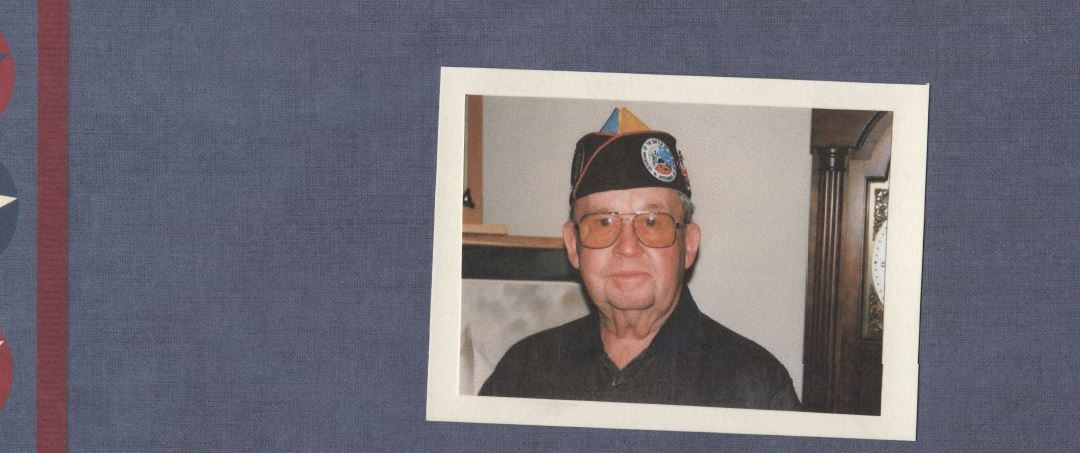A Life of Chance and Circumstance
Local resident Raymond Custard has lived through, and often experienced firsthand, some of history’s most notable events in his 94 years. From growing up during the Great Depression, to serving his country during World War 2, to getting his MBA from Harvard, Mr. Custard’s life story is hard to summarize in just one article. His family calls him “Forrest Gump” for his incredible gift of unintentional timing.
Born in Sharon, PA on June 25, 1924, five years after World War I ended, Mr. Custard was the son of a steelworker. A working-class family, they spent time raising chickens and tending to their vegetable garden. This foundation helped the family sustain themselves when, in 1929, life changed for all as the Great Depression began.
Mr. Custard began his schooling in 1930 and it was in Junior High he discovered how much he loved math and science. In High School, he was able to foster this love by taking college preparatory classes including Algebra, Plane and Solid Geometry, Trigonometry, and an Introduction to Calculus. When he wasn’t studying, Mr. Custard participated in a group with advanced math students and worked at a grocery store on Saturdays. His classmates and teachers lovingly referred to him as “The Professor”.
The attack on Pearl Harbor rocked the world on December 7, 1941 during Mr. Custard’s junior year. To this day, he vividly recalls watching the New York Giants play the Brooklyn Dodgers on television. As the Dodgers led the Giants 7-0, the broadcast was interrupted to break the news of the attack to the country. The United States of America officially entered World War II the following day and would eventually take Mr. Custard and many of his classmates with it.
Mr. Custard went on to graduate from Sharon High in 1942. At the time men ages 21 to 36 were required to register for the draft. Due to the war effort, Congress updated the draft rules in 1942, expanding the draft age to 18. Men who were 18 on or before July 1, 1942 were now required to register for the draft. With his June 25 birthday, Mr. Custard qualified by one week.
After registering for the draft, Mr. Custard attended Ohio Northern University to study engineering in the fall of 1942. He enlisted in the Army Reserves with the intention to get an educational deferment and the hope of never being called for duty. Shortly after he enlisted, though, the powers at be decided the Army Reserves were to be called into immediate service.
He was inducted at Fort Meade, MD and went to Fort Bragg, NC for basic training at the Field Artillery Replacement Center in 1942. His group was the first to be trained on the 105 Howitzer, a type of heavy-duty artillery. This new weapon caused lots of excitement among his group as those who preceded them in basic training were trained on weapons from World War I, a testament to how ill-prepared the United States was for World War II at first. Mr. Custard quickly discovered that his love for mathematics would come in handy, “All the fire control is remote, and we’d be shooting down the road 6-8 miles. You’d have to change the deflection, direction, and elevation of the gun. It was all basically trigonometry.”
After 90 days of basic training, Mr. Custard was nominated and accepted into the Army Specialized Training Program at North Caroline State College because he scored highly on his Army Generalized Classification Test. He enjoyed three semesters there furthering his education in engineering until the program was closed in late 1943/early 1944. His program was closed, and students were sent to Combat Infantry Divisions in anticipation of the loss of troops from when the mainland of Europe was finally invaded. In Mr. Custard’s opinion, this backfilling was a very costly mistake, a terrible waste of manpower, and because of it a lot of competent people became replacements in high-casualty areas. In his division, for example, many of those that survived went on to get much higher education such as PhD’s, but those that did not survive were destroyed as infantrymen.
Mr. Custard was sent to the Cannon Company, 347th Infantry Regiment and 87th Infantry Division. As is consistent with his’ life’s story, Mr. Custard was again coincidentally in the right place at the right time as his last day of field training in preparation to go overseas took place on a day that will live in infamy. He was participating in field training on June 6, 1944 when the company clerk announced the Allies had invaded Normandy.
He and other troops immediately prepared to go overseas. He traveled to Camp Kilmare, NJ and boarded the Queen Elizabeth bound for Scotland with 15,000 other men. Mr. Custard was then based in England for several weeks until he was sent to LeHave, France with the 87th Infantry Division. In December of 1944, they went on to penetrate the German Siegfried Line with the goal to reach Manheim. What would ensue next would be deadliest and most desperate battle of the war – the Battle of the Bulge. Mr. Custard and his division of the General Patton’s 3rd Army were the most eastward in the battle.
“Two things were very vicious – the weather and the combat,” Mr. Custard said. Soldiers were given semi-winter clothes and it wasn’t unusual for them to have frost between their toes. Most of the men took their shoes off and threw them away, then filled their rubber boots with leaves or whatever else they could find to insulate them.
As for the combat, the U.S. Army suffered over 100,000 casualties during the Battle of the Bulge’s one month of battle. Mr. Custard witnessed many of his friends perish by machine gun fire and he doesn’t prefer to talk about this part of his military experience because of it.
Mr. Custard’s meals were often rationed during his deployment. C-rations, which were canned and pre-cooked, or K-rations, which provided three separately boxed meal units for breakfast, dinner (lunch) and supper (dinner). Very rarely did Mr. Custard get a hot meal.
There were also no sleeping or sanitary facilities. Mr. Custard slept in slit trenches or fox holes many nights and bathed using melted snow or stream water and his helmet.
After the battle was over, Mr. Custard and his regiment traveled West and participated in a series of initiatives to undermine German forces for the next 5 months. On their travels, they captured the German city of Koblenz, were awarded the Presidential Unit Citation, conducted an assault crossing of the Rhine River, liberated the Buchenwald Concentration Camp, and Mr. Custard met a very famous but mysterious Army General while stranded in the middle of Germany.
At night, Mr. Custard and his regiment were chasing the German fighter planes in mounted combat patrols. He rode in the back of the Jeep and manned a machine gun. One night, he and his Jeep driver’s mission went sour when the Jeep driver hit a culvert. He and the driver had no communication, no one knew they were sitting alone in the middle of Germany, and they didn’t know where exactly they were. They stayed where they were in hopes of being found and mounted their machine gun on stones and pointed it down the road to serve as some form of protection.
On the third day of being in this predicament, a column of soldiers approached them. Mr. Custard was unsure if the soldiers were friends or foes until he saw who was sitting in the observation vehicle – General Patton himself. The column stopped right in front of Mr. Custard and the Jeep driver. In a high-squeaky voice, General Patton asked the two young soldiers what they were doing.
“You’ve just encountered two vicious infantrymen from the 87th division,” Mr. Custard replied.
General Patton then asked what they planned to do with the machine gun, to which Mr. Custard replied that they were going to shoot at whatever came up the road.
“Good!” General Patton exclaimed. General Patton then called on his radio to an ordinance group to pick up the two soldiers. Then, as quick as he came, General Patton left.
Finally, among allied forces, Mr. Custard was bombarded with questions. “Everyone kept asking me what General Patton was like because most people hadn’t seen him,” Mr. Custard said.
Mr. Custard and the Jeep driver were subsequently given a 3-day pass to Paris for rehabilitation. They happened to be in Paris in the summer of 1945, just in time to partake in the VE Day celebrations over Germany’s surrender.
Upon his return from rehabilitation, his division was packing up to return home on a rotational furlough before they would begin to train for the invasion of Southern Japan. His last day of training would again be quite memorable because it was that day President Harry Truman announced that the war had finally ended. With that, Mr. Custard was sent to Fort Meade, MD to be discharged instead of overseas for more battles.
Thanks to the GI Bill, Mr. Custard was able to enroll in Purdue University and study electrical engineering. During his senior year, Purdue University dormitories were overbooked, and he was forced to room with a freshman for a few weeks. Fate once again dealt Mr. Custard an interesting hand. The freshman assigned to his room was none other than Neil Armstrong – well before he became a famous astronaut. Mr. Custard and his friends provided Mr. Armstrong a lift home for Christmas break that year, as Mr. Armstrong’s hometown in Ohio was on the way back to Pennsylvania.
The summer before graduation, Mr. Custard was on his way home from college when he decided on a whim to pick up an application for a summer job at the Westinghouse Employment Office. Mr. Custard was surprised to see his ex-girlfriend working in the office, but excited when she was able to convince management to interview him on the spot. Mr. Custard did a series of interviews and Westinghouse hired him to start working the next day. He worked at Westinghouse for the next 42 years.
While at Westinghouse, Mr. Custard experienced the dawn of the computer era as he managed a group that programmed the IBM 705. They started the early phases of artificial intelligence. Their first application of the IBM 705 was to mimic actions of a design engineer. Later in his career, Westinghouse honored Mr. Custard by sending him to Harvard to receive his MBA. In 1966, Westinghouse brought Mr. Custard and his wife and children to the Beaver area, where he has lived ever since.
Throughout his life, Mr. Custard has witnessed many of the world’s most notable events firsthand. From living during the Great Depression to serving in World War 2, to rooming with Neil Armstrong, to developing artificial intelligence and the first computers, Mr. Custard has not just seen, but experienced it all.
With Veterans Day having just passed, Mr. Custard’s testimony serves as a reminder for us all to stop and engage our local Veterans. They all have tales to tell, and we should all take a minute to hear them.











